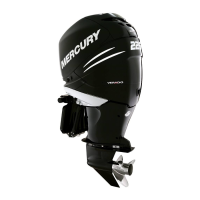
Do you have a question about the Mercury 200 VERADO and is the answer not in the manual?
| Engine Type | 4-Stroke |
|---|---|
| Gear Ratio | 1.85:1 |
| Full Throttle RPM Range | 5800-6400 RPM |
| Fuel System | Electronic Fuel Injection (EFI) |
| Exhaust | Through Prop |
| Horsepower | 200 HP |
| Fuel Induction System | Electronic Fuel Injection (EFI) |
| Shaft Length | 20", 25" |
| Starting | Electric |
| Fuel Type | 87 Octane |
| Cylinder Configuration | Inline-6 |
| Cooling System | Water-cooled with thermostat |
Details how to transfer the limited warranty to a subsequent purchaser.
Information on registering the product for warranty coverage in the US and Canada.
Procedures for registering the product outside the US and Canada.
Details the limited warranty coverage for specific regions and models.
Specifies the duration of the limited warranty for recreational and commercial use.
Steps for customers to obtain warranty service and coverage.
Lists items and conditions not covered by the limited warranty.
Details the limited warranty against corrosion for marine engines.
Requirements for obtaining warranty coverage, including registration and maintenance.
Legal disclaimers and limitations on implied warranties and damages.
Explains services not covered by warranty and general exclusions.
Operator's duties for safe boat operation and occupant safety.
Guidance on reading the manual and understanding safe operation before use.
Information on the importance of matching outboard horsepower to boat capacity.
Recommendations for operating high-speed or performance boats safely.
Description of outboards equipped with Mercury remote controls for throttle and shift.
Explanation of the lanyard stop switch's function and purpose.
Safety advice for avoiding injury to persons in the water.
Safety precautions for passengers on pontoon and deck boats.
Hazards associated with operating boats over waves and wakes.
Precautions and recommended speeds when operating in areas with underwater obstacles.
Guidelines for the maximum permissible mounting height of the outboard.
How to determine and adjust the correct static waterline position.
Guidance on choosing and installing approved accessories for the outboard.
Recommended methods for positioning and supporting the outboard during boat trailering.
Guidelines on appropriate fuel types, octane ratings, and precautions.
Adverse effects of alcohol in gasoline and recommendations for its use.
Instructions and safety warnings for filling the fuel tank.
Recommended engine oil types and specifications for the outboard.
Procedures for checking and adding engine oil, including proper level indications.
Detailed explanation of the panel mount control handle's functions and operation.
Operation and features of the single handle console control.
Operation and features of the slim binnacle control.
Operation and features of the dual handle console control.
Operation and features of the dual handle control with CAN trackpad.
Explains the audible warning horn signals and their meanings.
How to operate the power trim and tilt system for adjusting outboard position.
Procedures for tilting the outboard to the full up position at helm and engine.
Essential checks to perform before starting the engine.
Precautions for operating the outboard in freezing or near-freezing conditions.
Recommendations for flushing and cleaning after use in salt or polluted water.
Crucial steps for breaking in a new engine to ensure longevity.
Step-by-step instructions for starting the outboard engine.
Procedures for shifting gears with different remote control types.
Instructions on how to properly shut down the outboard engine.
General advice for keeping the outboard in optimal operating condition.
Recommendations for choosing genuine replacement parts and lubricants.
Information on the emission certification label and owner responsibility.
Recommended maintenance tasks based on usage intervals.
Procedures for flushing the outboard's cooling system.
Steps for removing and reinstalling the outboard's cowls.
Instructions for cleaning and waxing the outboard cowls.
Specific cleaning procedures for the powerhead when used in saltwater.
Guidelines for inspecting the battery to ensure proper starting capability.
Minimum SAE starting battery requirements for DTS products.
Information on the air filter assembly, its cleaning, and installation.
Safety instructions and inspection procedures for the fuel system.
Function and maintenance of the water-separating fuel filter.
Explanation of corrosion control anodes and their periodic inspection.
Step-by-step guide for replacing the outboard propeller.
Procedures for inspecting and replacing spark plugs.
Location and replacement of fuses protecting the electrical circuits.
Safety instructions and inspection procedures for the fuel system.
Function and maintenance of the water-separating fuel filter.
Warnings and checks for the DTS wiring system.
How to inspect the accessory drive belt for wear or damage.
Procedure for checking and topping up the power trim fluid.
Procedure for checking and topping up the power steering fluid.
Instructions for changing the engine oil using pump or drain methods.
Steps for removing and installing a new oil filter.
Procedures for checking, draining, and refilling gearcase lubricant.
Key considerations and procedures for preparing the outboard for storage.
Procedures for preparing the fuel system for storage, including fuel treatment.
Steps to protect external metal surfaces and paint during storage.
Procedures for protecting internal engine parts during storage.
Gearcase preparation steps for storage, including lubricant checks.
Recommended positioning of the outboard for storage to allow water drainage.
Guidelines for safely storing the outboard's battery.
Possible causes and solutions when the starter motor fails to crank the engine.
Common reasons and troubleshooting steps for an engine that will not start.
Troubleshooting steps when the engine starts but cannot be shifted into gear.
Potential causes and solutions for an engine running erratically.
Factors that can lead to a loss of engine performance and how to address them.
Causes and troubleshooting for a battery that fails to maintain its charge.
Advice on returning the outboard to a local authorized dealer for service.
How to find service when away from your local dealer.
Where to direct inquiries for genuine replacement parts and accessories.
Steps to follow for additional assistance with product problems or questions.
Contact information for Mercury Marine service offices worldwide.
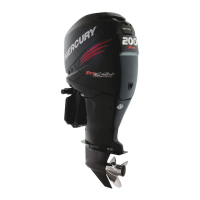
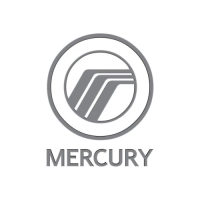
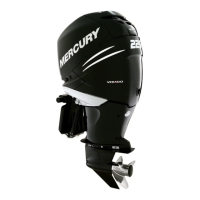
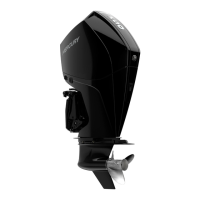
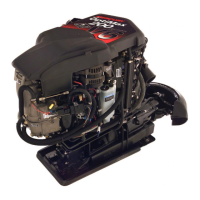







